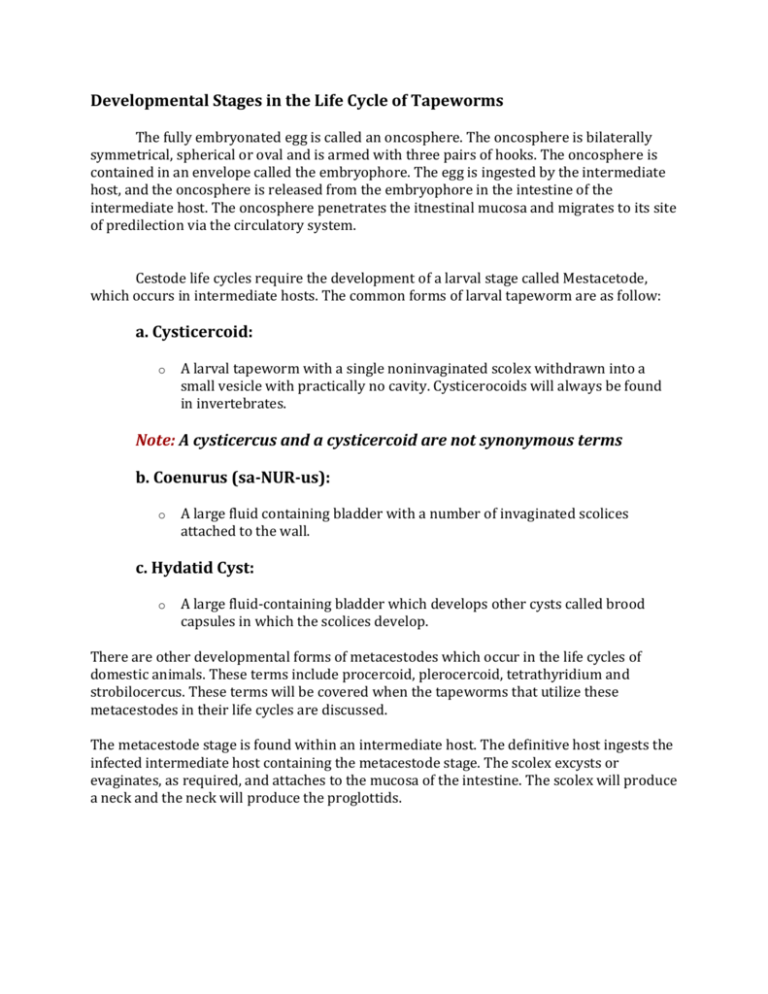Developmental Stages in the Life Cycle of Tapeworms
advertisement

Developmental Stages in the Life Cycle of Tapeworms The fully embryonated egg is called an oncosphere. The oncosphere is bilaterally symmetrical, spherical or oval and is armed with three pairs of hooks. The oncosphere is contained in an envelope called the embryophore. The egg is ingested by the intermediate host, and the oncosphere is released from the embryophore in the intestine of the intermediate host. The oncosphere penetrates the itnestinal mucosa and migrates to its site of predilection via the circulatory system. Cestode life cycles require the development of a larval stage called Mestacetode, which occurs in intermediate hosts. The common forms of larval tapeworm are as follow: a. Cysticercoid: o A larval tapeworm with a single noninvaginated scolex withdrawn into a small vesicle with practically no cavity. Cysticerocoids will always be found in invertebrates. Note: A cysticercus and a cysticercoid are not synonymous terms b. Coenurus (sa-NUR-us): o A large fluid containing bladder with a number of invaginated scolices attached to the wall. c. Hydatid Cyst: o A large fluid-containing bladder which develops other cysts called brood capsules in which the scolices develop. There are other developmental forms of metacestodes which occur in the life cycles of domestic animals. These terms include procercoid, plerocercoid, tetrathyridium and strobilocercus. These terms will be covered when the tapeworms that utilize these metacestodes in their life cycles are discussed. The metacestode stage is found within an intermediate host. The definitive host ingests the infected intermediate host containing the metacestode stage. The scolex excysts or evaginates, as required, and attaches to the mucosa of the intestine. The scolex will produce a neck and the neck will produce the proglottids.











